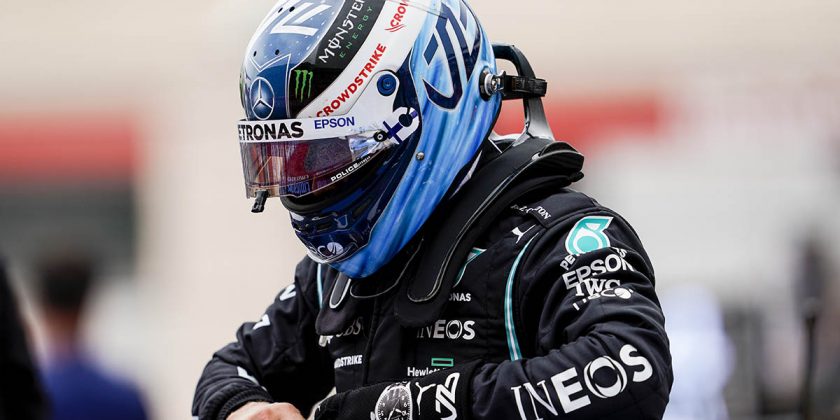Mercedes’ director of trackside engineering, Andrew Shovlin, revealed Valtteri Bottas was driving towards a one-stop strategy at the Austrian Grand Prix.
He was heard on team radio discussing about driving to “plan A” as he sat a distance behind Lewis Hamilton and Lando Norris in the early stages of the race.
Bottas was able to get past the McLaren of Norris while the Briton served a five-second penalty in the pits, while the Finn moved past team-mate Hamilton as he had suffered car damage.
Bottas came home P2 behind Max Verstappen come the race’s conclusion, and he said afterwards that his podium made him feel like he was back up to the performance level he expects of himself.
Shovlin, meanwhile, said Bottas was simply lapping slightly slower than those in front in order to preserve tyre life on his W12.
He said in Mercedes’ YouTube debrief after the race: “In the early stages of the race Valtteri did mention he was driving to plan A, and we briefed them on these on the morning but basically plan A was a one stop, plan B would have been a two stop and we don’t have that the same every time, because it is a bit obvious for our competition to see what we are doing.
“But Valtteri came on just to confirm the way he was driving, he was thinking of driving to the one stop, he had to increase the amount of management and he just dropped back to get a bit of free air because it actually gives the car more downforce, it looks after the tyres a bit more easily and he was just keeping us up to date with that change.”
Norbert Haug has revealed that Mercedes had discussed buying McLaren when they were looking to become a works team in 2010.https://t.co/Bed0faN7Em #f1 pic.twitter.com/fyNRkEuVin
— Planet F1 (@Planet_F1) July 8, 2021
View the latest Valtteri Bottas merchandise via the official Formula 1 store
The Pirelli tyre selections were one step softer than the previous weekend’s race for the Styrian Grand Prix, leading to thoughts that the majority of the grid would have opted to stop twice in the race.
But Shovlin revealed that the lower temperatures meant the tyres were more workable than first thought, and the selections from Pirelli didn’t change things too much.
He said: “The reality is, it doesn’t make a big difference because we’ve got to get the car working across a range of [compounds]. You’ve got to use at least two of them in the race.
“The bigger factor is that they do change the degradation however in the second week we had much cooler track temperatures.
“So, for the race it was in the low 30s, the week before we had seen it in the 50s. So, despite going one step softer, that cooler track actually meant that you could still do the one stop strategy and actually if anything the degradation was a little bit lower in the second week.”
Source: Read Full Article
